Advertising on Instagram is so easy! It’s just a graphic and a short text, even a kid would do it!
Have you ever heard someone saying things like this? As you’re reading this article, I guess you did, and you already know that it’s far from the truth.
Today we’ll show you what is the best approach to successful advertising on Instagram and what are the most common mistakes that advertisers make on the platform.
You’re not setting goals for each campaign
If you don’t already have a strategy and defined goals, how can you know if your campaign was a success or not?
The very first thing you need to specify when creating a campaign is its objective. This is simply what Instagram will ask you to choose. But specifying whether you’d like to reach more users, increase your engagement or get more profile views, is not enough. You need to know what will be the measure of your success for the objective you’ve chosen.
If you’re a beginner, you may ask: but how can I know that? What should I benchmark against? Who to compare it to? How can I estimate potential results from my campaign?
The best data you can get is your historical data. If you’ve already set even a few Instagram campaigns, you’ll know what results you can expect within a given budget.
If it’s your first campaign, that’s ok as well! Just think which aspect of your Instagram presence you’d like to improve and how. Will you be satisfied if your reach doubles? If your engagement would be 3 times bigger? That’s good enough for the start! The more campaigns you’ll run, the more precise you’ll be in defining their objectives and possible outcomes of each campaign.
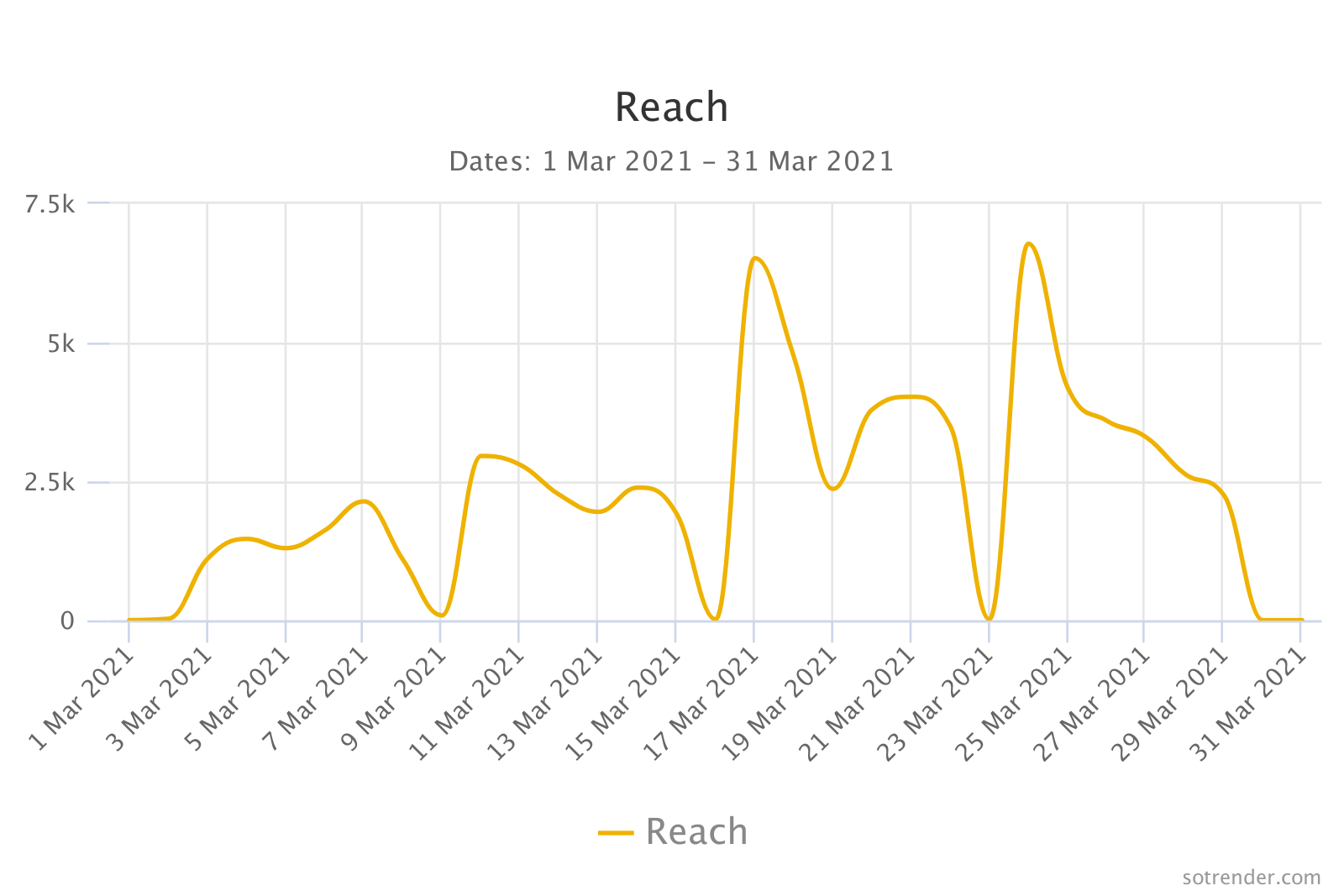
You can always start by analyzing and optimizing your reach. By looking at your current reach you’ll be able to tell reaching how many more users will be a success.
Start analyzing your Instagram performance
Advertising on Instagram is detached from your other marketing activities
We’ve already mentioned that it’s important to start with setting a goal for your campaign, so that you’ll know what you’re aiming for. But any campaign you’re preparing shouldn’t be detached from other marketing activities you’re running at the same time. You need to be consistent in your communication, so that your audience is not lost in your offering.
Also your ads should be coherent with your brand’s identity. Always remember to use your brand’s colours, logo and tone of voice you normally use.
Once your target audience sees your ad, they should immediately connect it with your brand, not your competitors.
You haven’t defined the target audience in the first place
We won’t exaggerate by saying that clearly defining who you want to reach with your ads is the most important element of your campaign. You might have the most visually attractive ad but if you target it to the wrong people, meaning to the people that are not interested in your product or service, your campaign will never be successful.
Here’s an example. You’re selling luxurious sneakers that are very fashionable but cost $800. If your ad reaches people living in the countryside, most probably these people couldn’t afford it. You could also try reaching people living in very big cities or metropolitan areas, but if you don’t narrow down such a huge audience, you may end up on reaching business men aged 50+, older people, or students that’d love to own your sneakers but can’t afford them right now. None of these people will buy your product, and you won’t be satisfied with the ROI of your campaign.
Not only to create a successful Instagram campaign, but also to have decent results of any marketing activity you should always have clearly defined buyer personas.
You’re not using Facebook Ads Manager
Are you setting your Instagram ads directly on Instagram? Maybe it’s not the biggest mistake you can make, but professionals (like PPC specialists or social media managers) definitely don’t set ads that way.
There are several benefits of creating an Instagram ad campaign in Facebook Ads Manager:
- you can be more precise in targeting your ideal audience
- you’ll have more control over your budget
- there are more objectives to choose from when creating your campaign
- it’ll be possible to add several creatives to one campaign
- it’ll be possible to create Instagram Stories ads
- you’ll be able to analyze your campaign in a very in-depth way (when it’s still active as well as once it’s ended)
If you’re not sure how to use Facebook Ads Manager, we’ve prepared a complete guide on how to create an ad on Instagram by using this tool.
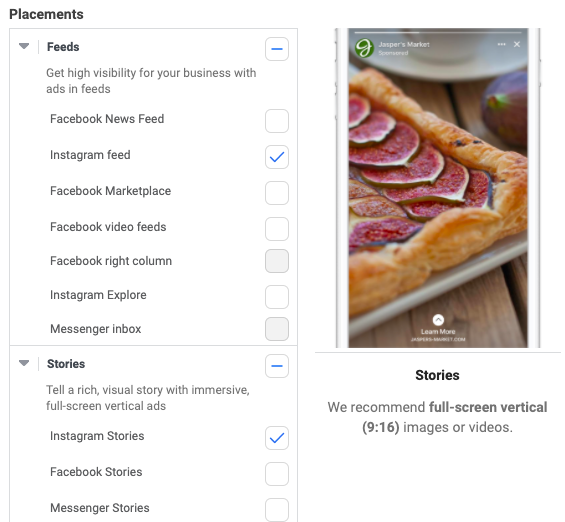
When creating an Instagram ad campaign in Facebook Ads Manager it’s possible to define in which placements your ad will be visible.
You haven’t considered the duration of the campaign
The majority of products can be promoted and sold all year long. If you’re selling, for example, kitchen equipment or underwear, these are the kinds of products that customers buy all the time. The same goes with services like Netflix or even cleaning services. However, it’s good to be aware of when people are more interested in, for example, hiring help for cleaning their house. Most probably, that will happen around Christmas and what you could do is intensify your paid activities during that time.
On the other hand, it may not always be that obvious when is the right time for your Instagram campaign. Even though it might be beneficial for you to run campaigns all year long, maybe your audience is less active on the platform on weekends, and in this case you may consider turning your campaigns off on Saturday and Sunday. You can easily do that when creating a campaign in Facebook Ads Manager.
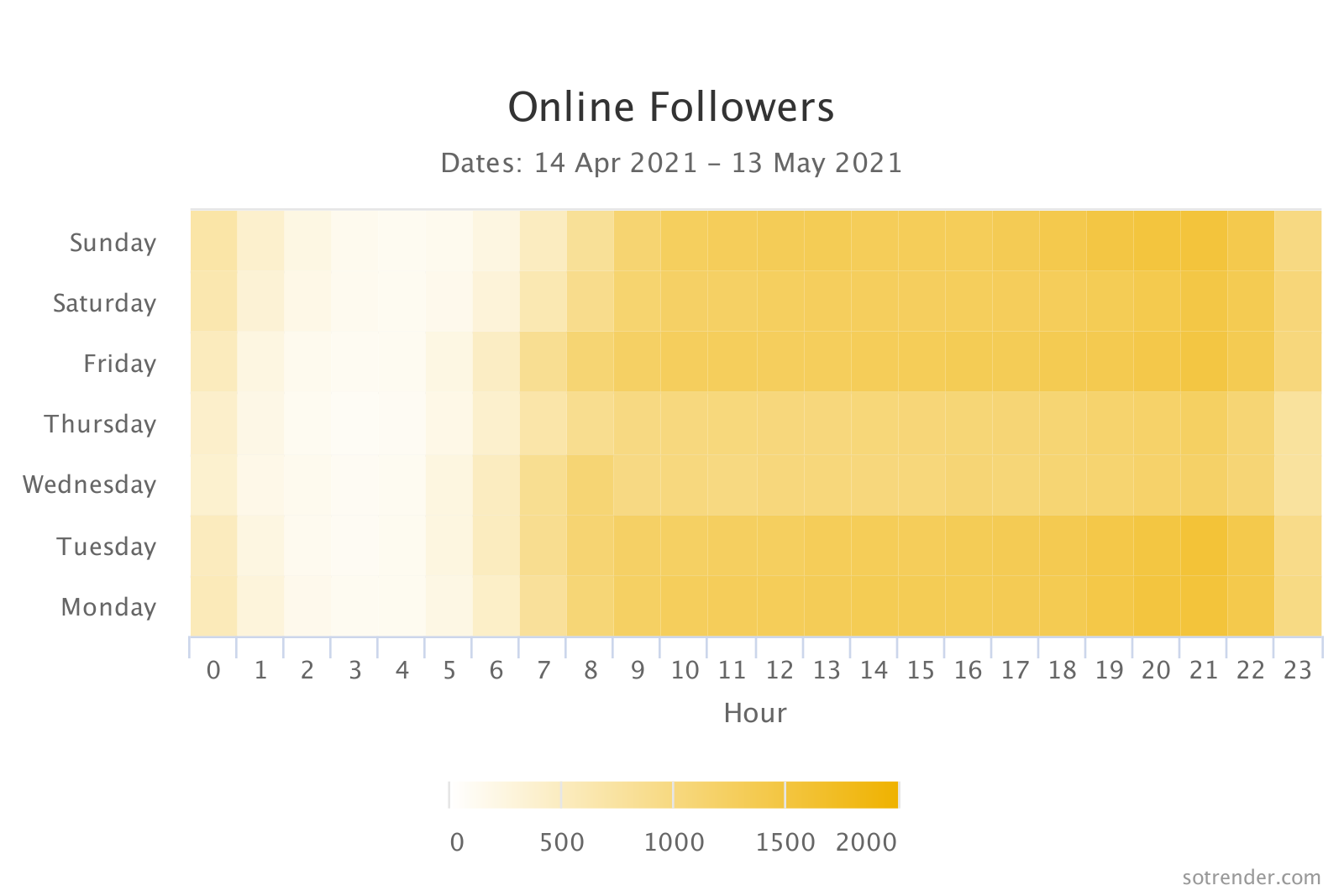
You can use Sotrender to check, for example, when your followers are actively using Instagram and based on that adjust the time when your ads will be running. By looking at the example above, we could say that it may be beneficial to switch a campaign off in the middle of the week, or running ads only from Friday to Monday.
You’re not controlling your budget spending
You can’t imagine how easy it’s to spend even thousands of dollars when advertising on Instagram. Of course, Instagram will be thankful for doing so, but not necessarily your boss, client or accountant. 
Again, this is why it’s much better to set your Instagram ads via Facebook Ads Manager. First thing is that you can set either the daily or a lifetime budget (and setting the daily budget gives you already more control).
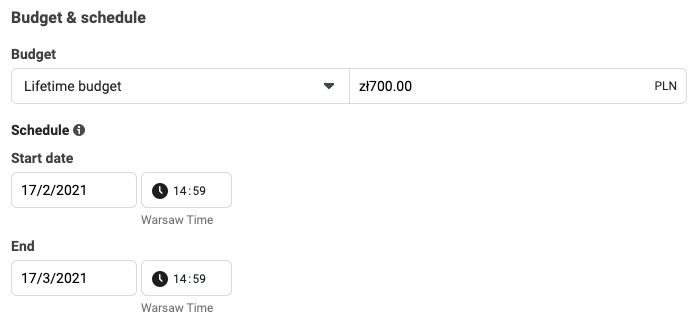
When creating your ads in Ads Manager you can set either a daily or a lifetime budget.
What is more important, you can analyze the budget spent day by day, but you can also monitor how much money was spent on each ad set or ad. If one ad is doing exceptionally well, you can move more budget to it, and turn other ads off.
In the example below you can perfectly see that ad number 5 was much more effective as it has the lowest CPM, so it may be worth moving more budget to this ad set or ad.
On the other hand, you could consider turning off ad number 1 and 2 as the CPM for these two ads was much higher with much lower number of impressions.
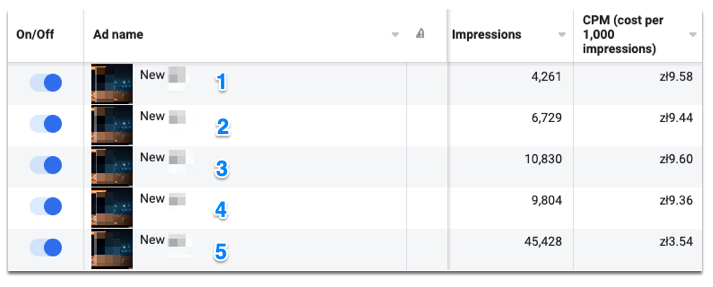
You’re overthinking the ad itself
Many beginners in the field think that the visual is the most important element of the campaign. You should already know, though, that a successful campaign is a mix of a perfectly defined target audience, well-thought out duration of the campaign, the visual asset, the copy and the hashtags that you’ve used.
When it comes to ad assets, there are three pieces of advice we can give you.
- Your visual asset should look like an organic post that users will find in their feed anyway. Good ads on Instagram shouldn’t be aggressive and interruptive.
- Your ad should easily grab users attention. And this doesn’t contradict the point above! If your ad remains unseen, your campaign will not be successful. It has to be interesting and catchy in some way. Not to mention the quality – high-quality is a must.
- Always remember to include a call-to-action (CTA) in your copy. It should be clear for your audience what action you expect them to take after they see your ad: it could be Visit our blog, Shop now, Use the promo code.
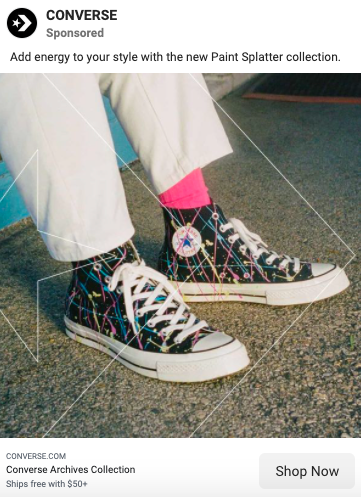
Clear branding, catchy graphics and a short copy with a call to action – this is what makes this Converse ad shine bright on users’ feeds.
You’re not analyzing the results
You may think that as you’re a marketer, not an analyst, you don’t have to do any kind of analysis. We must say that you couldn’t be more wrong! Analyzing any marketing activity is crucial, social media ads are no exception.
Choosing the right tool will make this task much easier, though. If you’ve had experience only with Facebook Ads Manager, we can understand why you’re not the biggest fan of revising your ads performance. 
Advertising on Instagram may initially look like a piece of cake, but the more time you spend on setting and optimizing your ads, the better you’ll understand that there are many elements that can actually have an impact on your overall performance.
We wish you good luck with your campaigns!




